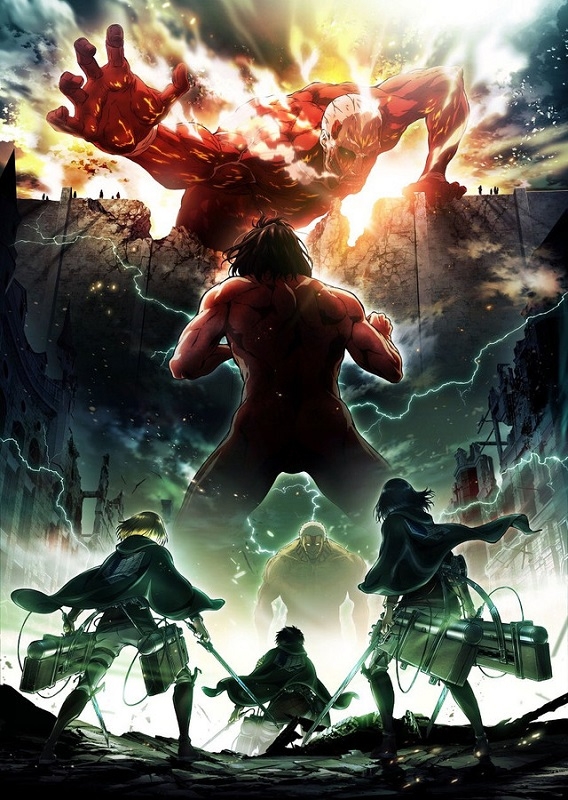
A look back at season one of ‘Attack on Titan’
By Caroline Ho, Arts Editor
Ready your 3-D Maneuver Gear: The second season of Attack on Titan is finally here.
The first episode of the anime’s new season came out on Saturday, four years after season one began in April 2013. If you don’t entirely remember what it was about, here’s a bit of a refresher review of the show so far.
Disclaimer one: This article was written before the first episode of season two aired.
Disclaimer two: I’ve only watched the anime and haven’t read the manga. (Disclaimer 2.5: Subbed, not dubbed.)
Attack on Titan (Shingeki no Kyojin) takes place in a post-apocalyptic world overrun by giant man-eating humanoid monsters called Titans. The remaining bastions of human civilization have lived behind giant defensive walls for the past century. Our heroes are Eren Jaeger and his friends, and they are all determined to join the military, fight the Titans, and someday reclaim the earth for humanity.
The most compelling thing about this series is the world. Bleak and desolate, the grim desperation of humanity clinging to survival in its last few cities is ominously believable, and even if you haven’t rewatched since season one ended, you’re sure to be drawn back in quickly. The world’s darkly captivating atmosphere is certainly helped along by the art and imagery of the surprisingly terrifying Titans. When this show was first recommended to me years ago, I thought giant naked carnivorous humans sounded cheesy and goofy, but they are indeed sufficiently chilling—particularly the unique beasts, like the Colossus Titan.
Another awesome aspect of the show is the 3-D Maneuver Gear, the battle equipment especially utilized by the Survey Corps. Using a combination of grappling hooks and gas propulsion, humans acrobatically fly through the air to combat the giant monsters. It looks super cool and almost fun enough to be worth living in a Titan-riddled wasteland.
Luckily enough, we have plenty of characters through whom we can vicariously live, though not all of them are all that sympathetic. Protagonist Eren comes across as overly talented, overly whiny, and not particularly likeable. His two closest comrades aren’t very original either: Mikasa is your typical female badass, and Armin is the awkward genius. However, outside the main trio of leader, fighter, and thinker, Attack on Titan has a large, fleshed-out supporting cast, chiefly Eren’s fellow soldiers. Personally, I’m oddly attached to outspoken and professed coward Jean. A lot of the others don’t have much personality beyond being purely badass, but there are enough characters for any watcher to likely find a favourite. Also, it’s always refreshing to be aware that, given the brutality of the show, anyone you like or dislike probably isn’t going to live long anyway. (Though it is much less satisfying if they come back to life three episodes later.)
Attack on Titan also has plenty of weaker aspects, primarily its frustrating sense of pacing. I’ve never been too fond of any anime with fights that last longer than an episode or two at most, and about half of season one is extended battles, which means cliff-hanger after cliff-hanger, all interspersed with flashbacks that don’t tell you nearly enough. None of the show feels like meaningless filler, but a lot of it doesn’t feel like substance either, and is rather just flashy combat scenes with admittedly awesome battle gear.
For better or for worse, Attack on Titan’s second season is only 12 episodes long, which is half the length of the first season. Hopefully the shorter run time will improve on plotlines being dragged on week after week, without simply heaping on more and more infuriating mysteries. And, hopefully, we won’t end up waiting another four years for the next season.

